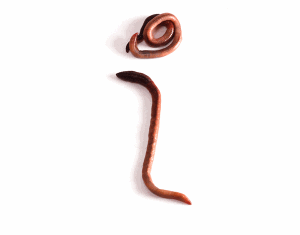svg-bar
🐛 Animated progress bars with variable widths and non-linear paths (i.e. squiggly)
SVGBar
Animated progress bars with variable widths and non-linear paths (i.e. squiggly).
Great for animating and controlling SVG progress bars with any of the following:
- variable widths along their profile
- non-linear paths (see the worms)
- an animation path defined separately from the progress bar shape
- multiple progress bars sharing the same mask
PlainJS - no dependencies!
See it in action here: Demo page!

Getting started
Include the SVGBar.js file in the head of the page:
<script src="/path/to/SVGBar.min.js"></script>
Add your SVG to the body of your page, for example:
<svg version="1.1" x="0px" y="0px" width="400px" height="200px" viewBox="0 0 400 200">
<path class="mask" d="M375,150H25V50h350V150z"/>
<path class="progress_path" d="M25,100h350"/>
</svg>
and then call:
var mySVGBar = new SVGBar();
This will initialise the SVGBar with the default options:
- The first
<svg>tag on the page will be used - The first
<path class='mask'>inside the svg will be used as the mask - All of the
<path class='progress_path'>paths will be used to create progress bars with the mask
The script will take care of building the progress bars and all other masks.
Styling
You should add some CSS styles for the mask and progress_paths to the page so you can see something. You can also style the ‘.path_line’ class which will enable you to toggle on/off a view of the path line. Here’s some styles to get started:
.mask{
fill:#B5B5B5;
stroke:none;
}
.progress_path{
fill:none;
stroke-linecap:butt;
stroke-width:500;
stroke:#5EB902;
}
.path_line{
fill:none;
stroke-linecap:round;
stroke-width:2;
stroke:#666666;
stroke-dasharray: 5, 5;
}
How it works
The progress bar uses a couple of different techniques:
- Dashed-line and dashed-offset CSS effect to create an animation along a path
- CSS clippath reference to inline SVG
- Dynamic creation and injection of CSS keyframe animations
The styling on .progress_path should include a stroke-width which is wider than the possible maximum width of the progress bar, to ensure the colour fill is good enough.
Options
To configure with some options, pass a plain object to the options argument of the constructor like this:
var svg_obj = document.getElementById('mysvg');
var mySVGBar = new SVGBar({
svg: svg_obj,
mask: svg_obj.getElementById('my_mask'),
progress_path: svg_obj.querySelectorAll('.paths_for_progress'),
animation_length: 3000,
track_mouse: 'x'
});
| Option | Description |
|---|---|
| svg | The DOM element containing the SVG |
| mask | The DOM element inside the SVG element which is the path to use for masking |
| progress_path | A NodeList or HTMLCollection all <path> elements in the SVG element which should be used in conjunction with the mask. Can also accept a single item. |
| animation_length | Length for the animation in milliseconds. Default is 5000. |
| track_mouse | Use this to enable a mouse handler for the svg, which will tie the movement of the mouse within the svg tag to the progress of the progress bar. Possible values are: ‘x’, ‘y’, ‘-x’, ‘-y’. |
Methods
See example-minimal.html for a demo of the basic features.
setProgress(percent)
Sets the position of the progress bar as a percentage from 0 -> 1. Useful to put inside a handler on the page for keyboard presses, AJAX calls, mouse movement etc.
mySVGBar.setProgress(0.4);
Chainable (returns object).
displayPathLine(will_show)
Show or hide an outline of the path the progress bar is following (great for debugging)
mySVGBar.displayPathLine(true);
Chainable (returns object).
togglePathLine()
Toggle visiblity of path line
mySVGBar.togglePathLine();
Returns true or false depending on new state of path line visibility.
setAnimationState(will_show)
Start or stop animating the progress bar back and forth from 0 -> 100%
mySVGBar.setAnimationState(true);
Chainable (returns object).
toggleAnimationState()
Toggle play/stop state of animation
mySVGBar.toggleAnimationState();
Returns true or false depending on new state of animation playback.
setPath()
Set the visible progress bar to a given element. This element must have been passed to the constructor initially in the progress_path option.
mySVGBar.setPath(document.getElementById('path1'));
Returns true if path could be set.
Events
See example-everything.html for a demo of the progressChanged event.
progressChanged
Will fire on a progress bar path node every time the progress changes. Read in the detail.progress value to get the current progress bar position.
document.addEventListener("progressChanged",function(e){
console.log(e.detail.progress);
});
Future extensions
- Improve passing of masks and progress paths to couple them together more closely
- Better getter/setter methods
- Functions should return sensible values
- Colour transition for progress bar between two values
- Add function to return current animation position